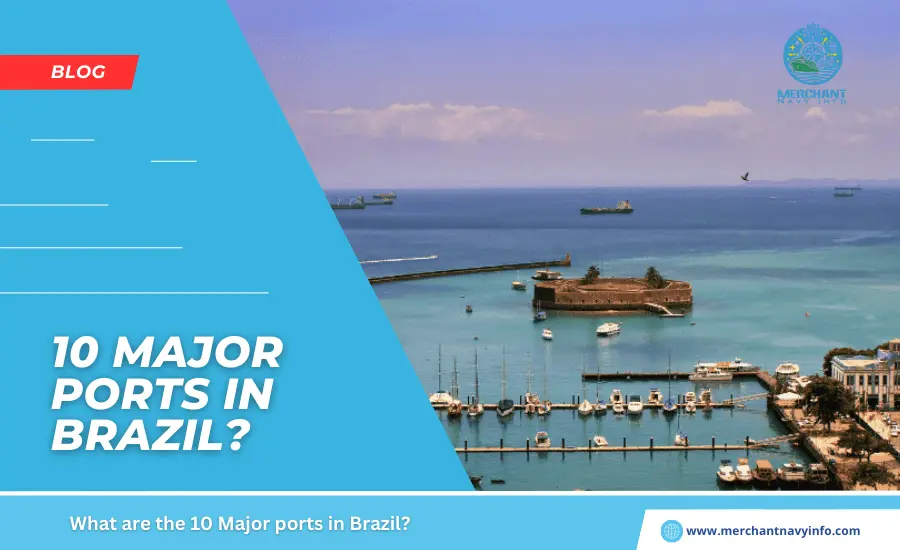
Brazil is the fifth largest country in the world, with a coastline of about 7,500 kilometers. Officially known as the Federative Republic of Brazil, the country is the largest in South and also Latin America, with a population of over 211 million people. Brazil borders every country in South America, covering almost half of the continent except Ecuador and also Chile. Ports in Brazil has 175 port facilities, of which about 32 are public ports, and also the rest are private ports.
The largest and also most important public ports in brazil is Porto de Santos, or also Santos Port, in the state of São Paulo. All ports in the country are regulated by the regulatory authorities ANTAQ (National Agency of Waterways and Transport) and also MTPAC (Ministry of Transport, Ports and Civil Aviation). Transport) and MTPAC (Ministry of Transport, Ports and Civil Aviation).
10 Major Ports in Brazil
1. Port of Santos – SP (Porto de Santos)
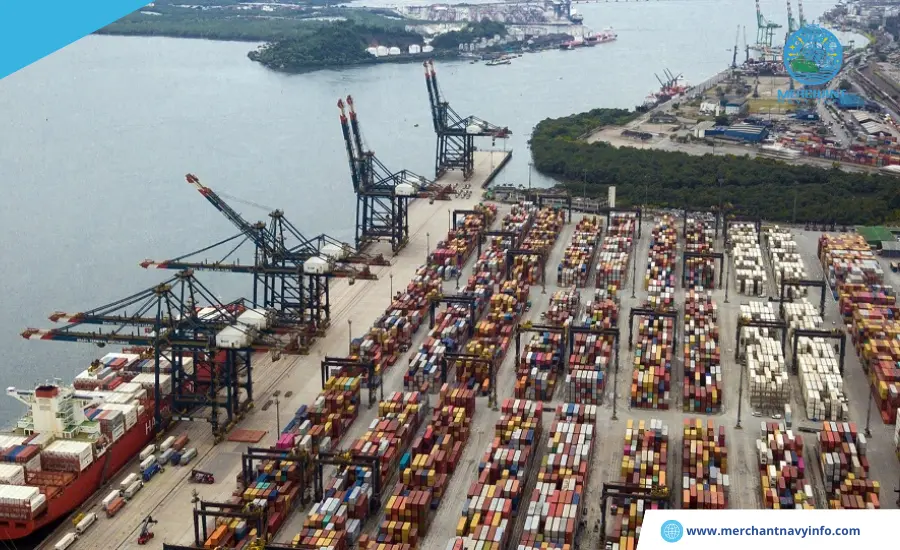
UN/LOCODE: BR-SSZ
Total capacity (2017): 1298 million tons
TEU traffic (2017): 2697 million vehicles
The Port of Santos, located in the city of Santos, São Paulo, Brazil, is the busiest container port in Latin America and also the 39th busiest in the world. It currently has the most modern structure in the country and also remains the largest port in Latin America.
Port of Santos
The port, also known as Porto de Santos, plays an important role in the economy of São Paulo, responsible for 28% of Brazil’s foreign trade. The 770-hectare Port of Santos is the gateway for most goods transshipped throughout the country. The most important exports are sugar, soybeans and also coffee. It is the largest port in Brazil, with export and also import capabilities worldwide. In 2010, the port recorded approximately 972 million tons of cargo.
Porto de Santos has quite a wide range of cargo handling terminals, including solid and liquid bulk cargo, containers, and general cargo. The Anchieta and also Immigrantes highways provide land access to the port, while Ferroban and MRS operate rail links.
2. Port of Santarém – PA Santarém, Pará
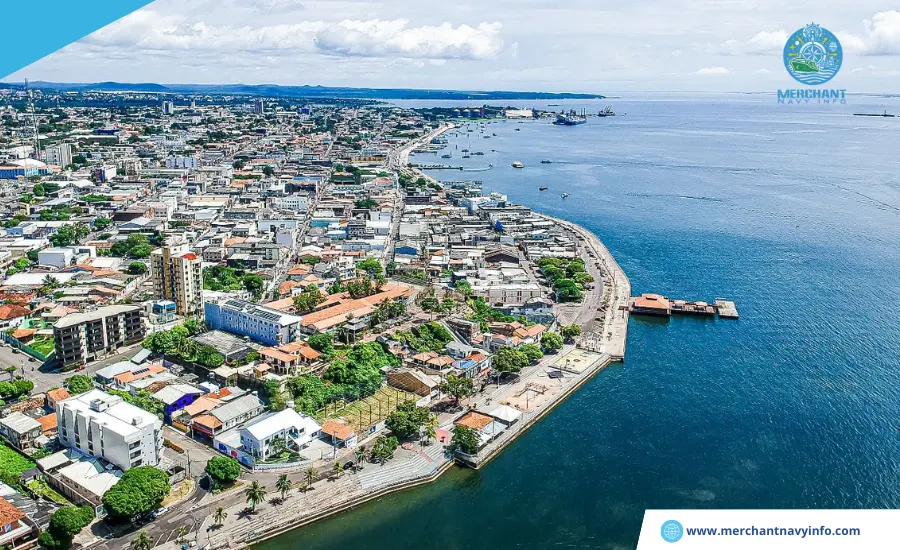
UN/LOCODE: BR-STM
Total cargo tonnage (2019): 12 million tons
Located in the city of Santarém, State of Pará, Brazil, the Port of Santarém is a very popular river port in the country. The port is located in Ponta do Sale on the south bank of the Tapajos River.
Port of Santarém
It is 3 km from the mouth of the Amazon and 867 km from the city of Belém. The military government started the construction of the Port of Santarém proposed in the National Integration Plan (PIN) in the 1970s. It was finally opened in February 1974, welcoming cargo and also passenger ships using the unstable municipal warehouses of Santarém. The port serves general cargo and also solid bulk cargoes of plant origin, fertilizers, and river passengers.
Cruise ships, fuel, liquefied petroleum gas, and other liquid bulk cargo of petroleum origin. Landings and exports of grain by inland waterway vessels are made from two directions: This includes about 80% of the cargo from Porto Velho (London) and 20% from Miritituba, Pará. The two main exports are timber and grains, including soybeans and corn, which are sent all over the world.
3. Port of Salvador – BA Salvador, Bahai
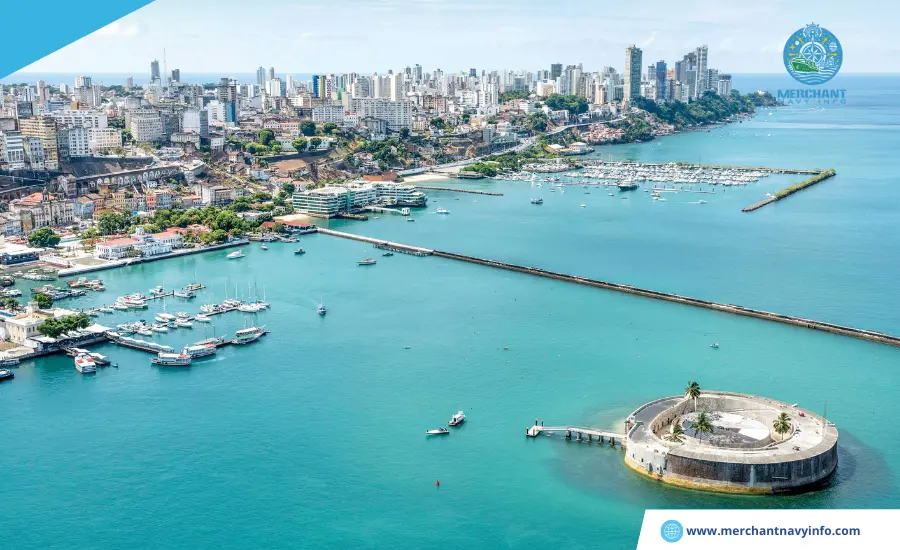
UN/LOCODE: BR-SSA
Total cargo tonnage: Approximately 5 million tons
The Port of Salvador is a Brazilian port located in the Bay of All Saints in the state of Salvador, Bahia. It is located on the eastern side of the entrance from the Atlantic Ocean to the Bay of Todos os Santos. The port was built to handle and distribute cargo throughout the state.
Port of Salvador
In 2007, Porto de Salvador’s cargo tonnage consisted of about 26 million tons of sea cargo and 053 tons of inland cargo. There are 12 berths for general cargo, one of which is dedicated to containers and also the other for RoRo. The Port of Salvador was founded in the 16th century and took a long time to become what it is today. The economic and population growth was noticeable in the 1940s. However, the construction of industrial centers and petrochemical complexes near the city highlighted the importance of a modern port.
4. Port of Vitoria – ES (Porto de Vitória)
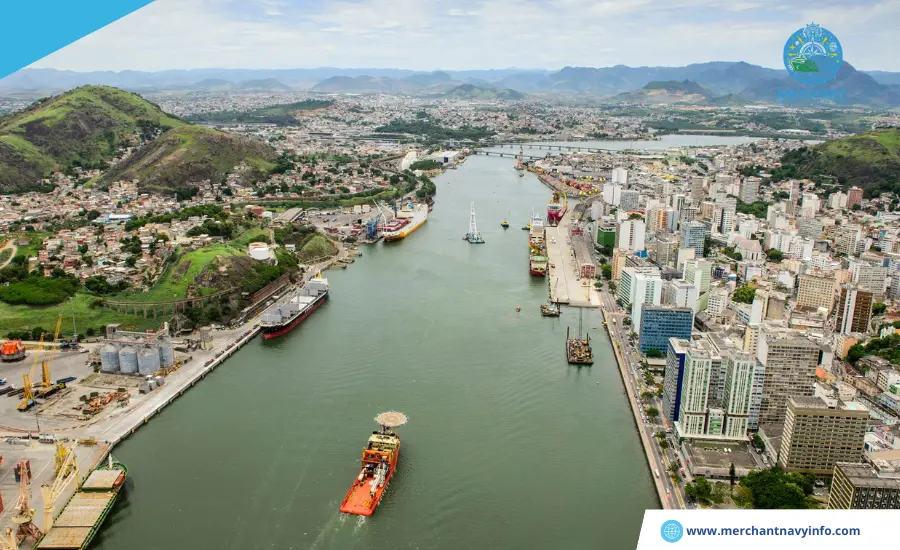
UN/LOCODE: BR-VIT
The Porto de Vitória is located in the city of Vitoria on the Bay of Espirito Santo in Brazil. It is located on the banks of the Santa Marta River, also on either side of the Bay of Vitoria.
Port of Vitoria
The port of Vitoria is one of the most difficult ports in the country for ships to reach. There has been a lack of investment in infrastructure to facilitate access for larger ships. As a result, the port is very narrow and also difficult to access due to stones and mountains. There are traffic restrictions which limit the use of the port. As a result, the Port of Vitoria is mainly used by cruise ships, as well as for repairing ships and oil rigs. When the port showed signs of overloading.
Companhia Vale do Rio Doce built another port in Vitoria. Several projects have been outlined to improve the Port of Vitoria; however, its construction is still underway. It is intended to support Brazil’s oil and also gas industry. The port will handle a variety of products, including steel products, cocoa, grains, and instant coffee beans. Other major products include marble, granite, steel, pig iron, and also bulk materials.
5. Port of Paranaguá – PR (Porto de Paranaguá)
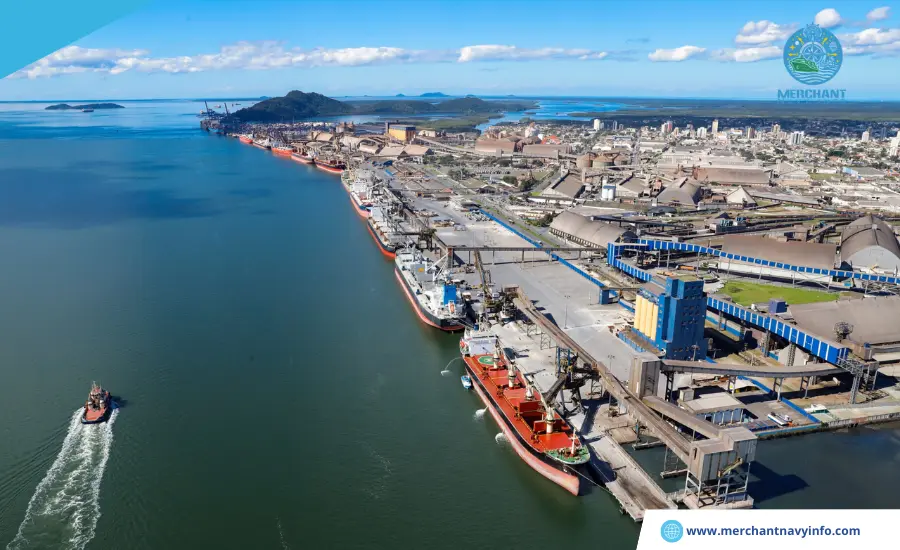
UN/LOCODE: BR-PNG
Total cargo tonnage (2020): 57 million tons
Located in the city of Paranaguá, State of Paranaguá, Brazil, the Port of Parana, Paranaguá is the largest bulk cargo port in Latin America. Among all ports in Brazil, Porto de Paranaguá is the largest port in grain exports, also second in tonnage, and third in container shipments.
Port of Paranaguá
Porto de Paranaguá is known primarily for the export of agricultural products such as soybeans and also soybean meal. Other exports include soybean flour, vegetable oil, sugar, paper (rolls), and frozen goods. This famous port was built as a private pier at the end of the 19th century. To date, the Port of Paranaguá does not have the proper structures to handle the current export volumes.
6. Port of Rio de Janeiro – RJ (Porto de Rio de Janeiro)
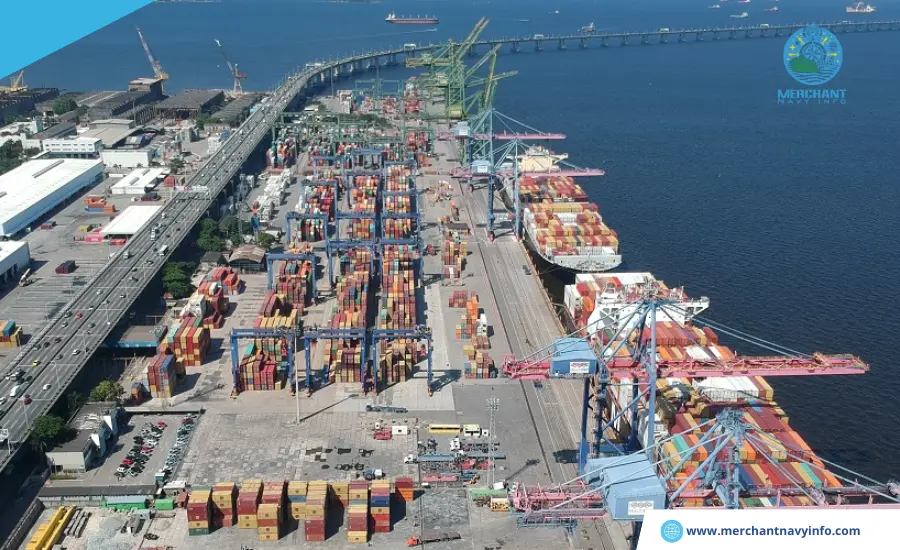
UN/LOCODE: BR-RIO
Total cargo tonnage (2016): 61 million tons
TEU traffic (2016): 290 thousand units
The Port of Rio is a seaport in the second largest city in Brazil, in the State of Rio de Janeiro. It is located on the west coast of the famous Guanabara Bay.
Port of Rio de Janeiro
The Port of Rio is the third largest port in Brazil, with containerized cargo, electronics, rubber, petrochemicals, steel products, and pig iron. In addition to bulk cargo, the main products of the Port of Rio de Janeiro include vehicle parts, pressed paper rolls, and coffee. The construction of the port was planned in the 1870s, but it was not opened until 1910. It has a pier with a total length of 67 kilometers, 31 berths, 18 warehouses, and also 15 open terraces. Companhia Docas do Rio de Janeiro is also responsible for the management and administration of the Port of Rio de Janeiro.
7. Port of Rio Grande – RS Rio Grande, Rio Grande do Sul
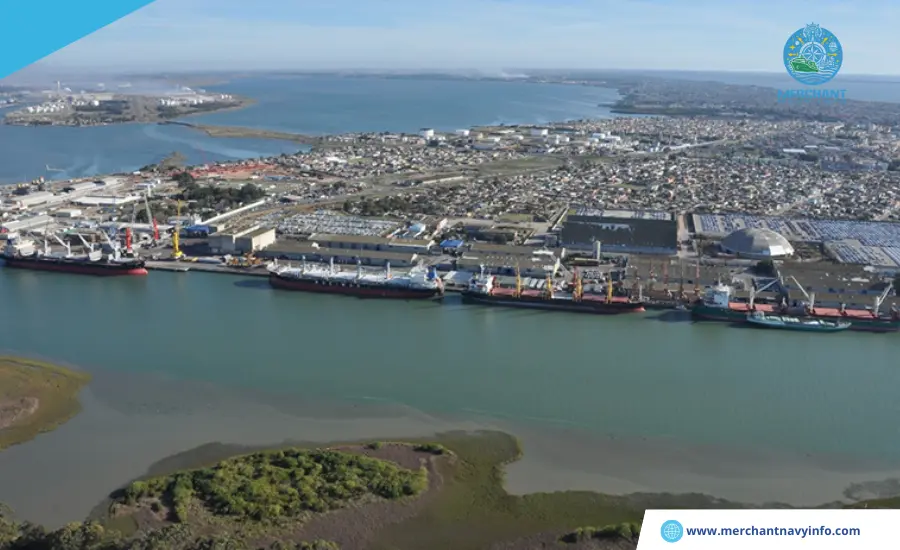
UN/LOCODE: BR-RIG
Total cargo tonnage (2015-2016): 376 million tons
The Port of Porto de Rio Grande, located in the state of Rio, is one of the most important ports in Brazil and also Latin America. It is the third-largest port in the country. The port is located on the right bank of the Canal del Norte.
Port of Rio Grande
The port was proposed at the foundation of the city of Rio Grande (1737), but construction did not begin until 1869. As a result, Porto de Rio Grande was not completed until 1972. Currently, the port is one of the most developed in the country. It has a long harbor and is not as congested or crowded as many other ports in Brazil. However, the main exports of the Port of Rio Grande include soybeans, soybean meal, wheat, rice, benzene, and also cellulose. On the other hand, the most important imports are mainly chemicals and minerals, crude oil, barley, and also wheat.
8. Ponta da Madeira – MA Sao Luis, Maranhão
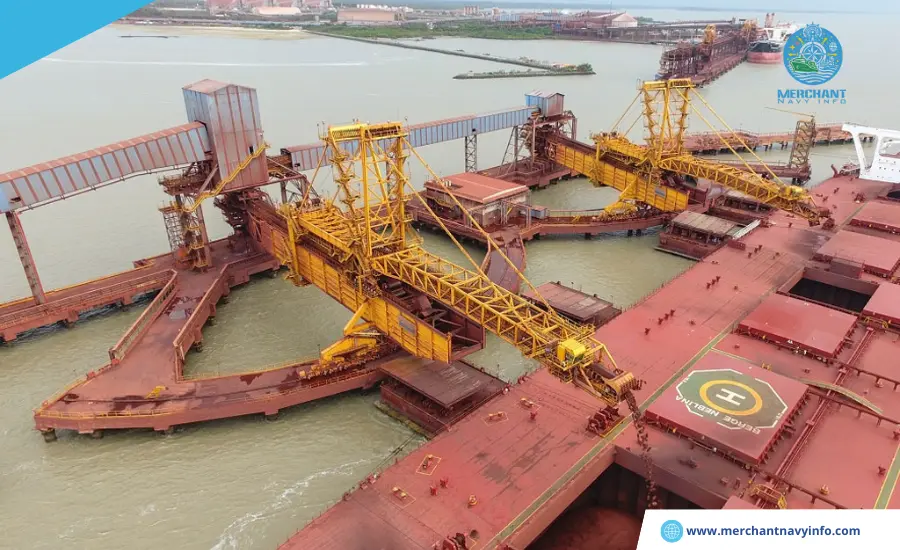
UN/LOCODE: BR-PMA
Total cargo tonnage (2020): 1901 million tons
Ponta da Madeira is located in the city of São Luis, Brazil. Maranhão is one of the largest iron ore loading ports in the country. This private port is one of the few terminals in Brazil suitable for ultra-large Balemax ships.
Ponta da Madeira
It is located right next to the Port of Itaqui, a public port in the very same state. Moreover, this private port was chosen as the terminus for Estrada de Ferro Carajas. Ponta da Madeira is owned by the Brazilian mining company Vale, which wants to build a huge steel mill next to the terminal. The private port is considered the country’s champion in handling goods.
9. Port of Itaqui – State of Massachusetts (Porte de Itaqui)
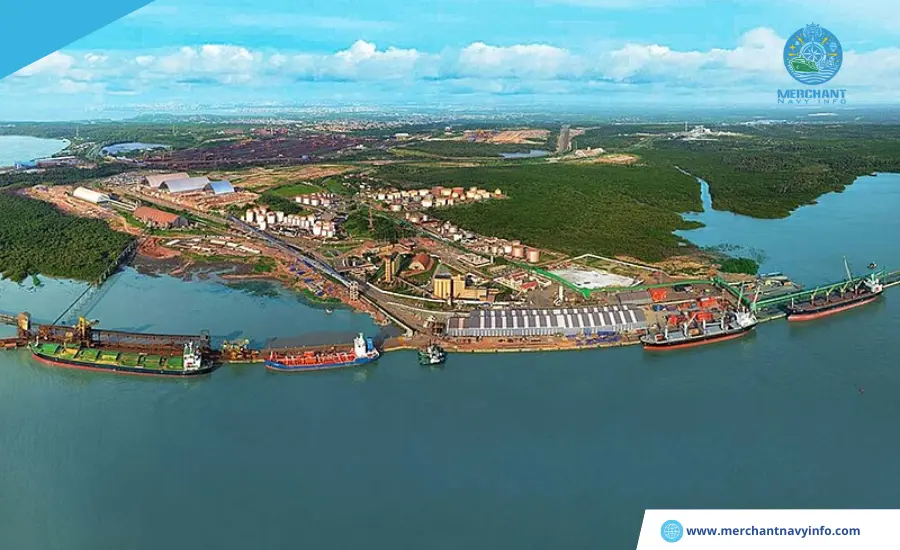
UN/LOCODE: BR-IQI
The Port of Itaqui is often quite confused with the known city of Itaqui in the state of Rio Grande do Sul. However, the port is located in the city of São Luis, state of Maranhão, Brazil. It is located next to the private ports in Brazil of Ponta da Madeira.
Port of Itaquis
Construction of the port began in 1966 and was completed around 1974. Initially, the port of Itaqui was managed by the Port Company of Maranhão, Codomar, and also Companhia Docas do Maranhão, but the administration was later transferred to the Maranhão State Government. Porte de Itaquis The main cargo is aluminum ingots and also bars and general solid and liquid bulk cargoes. The port also exports soybeans, copper, and pig iron.
10. Port of Pecem – CE São Gonçalo do Amarante, Ceara
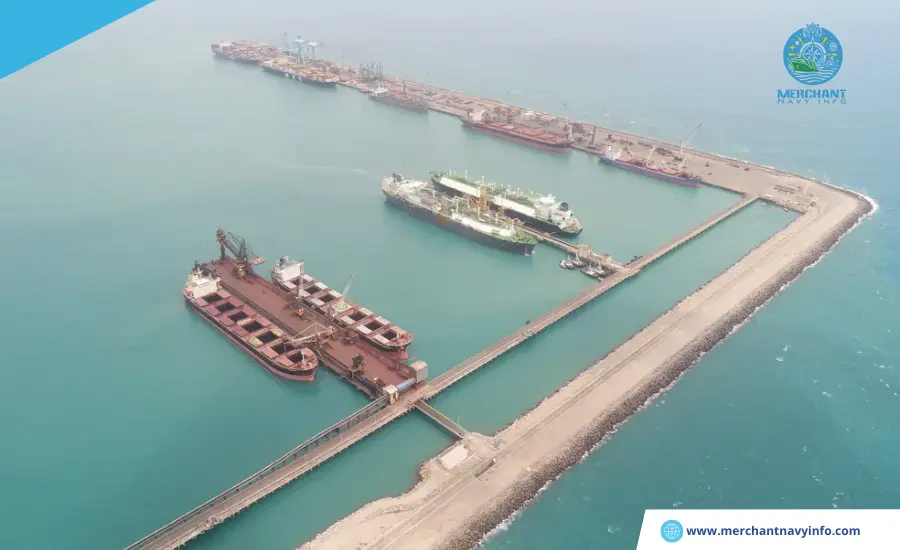
UN/LOCODE: BR-PEC
Total cargo tonnage (2013): 63 million tons
The port is located in the municipality of São Gonçalo do Amarante. It is one of Brazil’s two main ports in the state of Amarante. As part of the Brazilian government’s Accelerated Growth Program (PAC2), the port also has begun a phased expansion in the past.
Port of Pecem
Located in the northeast of Brazil, this port has grown rapidly and also strategically in recent years. It is located about 50 km from Fortaleza, the capital of the state of Cearas. The Port of Pecem is a very deep-water port with two piers. It handles general cargo and also containers. The main products imported and also exported through this small port are shrimp, fruits, and cashew nuts.









